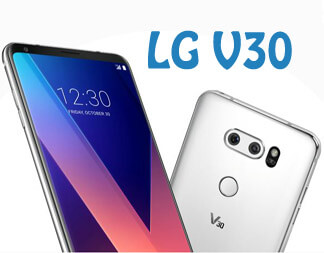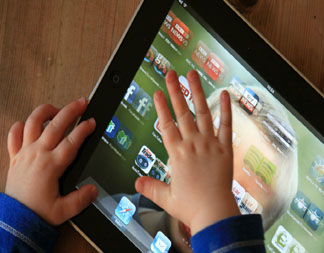Today I decided to bring you a smartphone buying guide in technology tips. The smartphone market changes very quickly. In a few months the technical characteristics are secrets, new technologies, models or previously unknown features appear.
Which one do I stay with? Here are the 3 factors to buy smartphone that you should know. The three characteristics that have the greatest impact on the final experience, which is what most ends up importing us. In search of the best quality price taking into account the main attributes of a phone and our always vital demands.
Smartphone buying guide you should read!
Of course size matters (and resolution too) to buy smartphone
We started at 3.5 inches and little by little we went up. 4.0, 4.3, 4.5, 4.7 and up to the current 5.0 inches or more. The size of a smartphone is the key feature, possibly the most important when it comes to feel comfortable with our phone.
 However, the choice is complex since it is a subjective attribute. Some like bigger ones, and some smaller ones. The key is to look for that size with which we feel more comfortable, whether they are reduced diagonals or larger packages. Despite the “fashion” for large phones, there are still many models that maintain the commitment to phones that can be handled comfortably with one hand.
However, the choice is complex since it is a subjective attribute. Some like bigger ones, and some smaller ones. The key is to look for that size with which we feel more comfortable, whether they are reduced diagonals or larger packages. Despite the “fashion” for large phones, there are still many models that maintain the commitment to phones that can be handled comfortably with one hand.
Along with the screen there is a key feature: the resolution. In a market where FullHD (1920×1080 pixels) are fashionable, there are many who do not see them really necessary. Of course the resolution is close to the size of the screen, and that is why an alternative measure is here, which is pixel density in dots per inch or dpi.
There are many who place the limit of ‘good’ at those densities above 300 ppi. And it must be recognized that a good experience can be maintained with something less. From 250 ppp onwards, a good resolution can already be considered, always with certain exceptions. For example, on entry phones where it is more difficult to find good panels.
A performance tailored to our needs
With performance we refer to the potential of the phone. It means hardware, speed of process, movement of the operating system, etc.
Currently there are multiple designers and hardware manufacturers: Qualcomm, Samsung, MediaTek and Apple for example. And in turn they cope with almost all the possibilities of the market. There are others with less packaging and generally with minimum market shares, which bet more on lower prices than on high quality.
The most important thing is that the phone is able to give us a satisfactory experience in its use, on a day-to-day basis. That the operating system moves efficiently and that applications open and close quickly, for example. Then there are some users who care that the phone is turned on and off with a certain speed, that applications are installed without affecting the performance of the system, or that the ‘camera’ is activated instantly. This is the difference, for example, between a medium hardware and a very high range.
In hardware we have another key factor in current systems: the RAM whose use depends greatly on the operating system. For example, Android is much more demanding than iOS or Windows Phone, the latter much more efficient. For the Android of Google it is advisable to go to 1 GB of RAM at least to maintain a very fluid experience. And try 2 GB for users looking for ‘the best’. The difference between 1 and 2 GB is that between something ‘good’ that serves us, and something ‘better’ almost perfect.
The operating system is important on this smartphone buying guide
Precisely we link with the always difficult choice of operating system. With the big three (iOS, Android and Windows Phone) already settled in the market and with some others with lower fees. Choosing a new phone has its difficulty.
iOS: the first, got a broad face-lift with iOS 7. It’s fast and stable although there is not much variety in devices and the well-known iPhone are quite expensive. The iPhone 5C for $ 599 and the iPhone 5S for $ 699. If you do not have a limited budget, iOS is a good choice. Also recently is the iPhone X.
Android: It’s the opposite in practically everything to iOS. It is still fragmented and in general it requires a superior hardware to execute it correctly. The good thing is that there is an infinity of models and manufacturers with phones ranging from less than $ 100 to several hundred. Ideal for low, medium or high ranges as long as you know which Android phone to choose.
Windows Phone If iOS and Android are the two “big” operating systems of the mobile world, Windows Phone is in a third position at a distant distance. In its favor is the stability of the system, although it lacks some features and many applications are missing from its virtual store. The Lumia 520 has made Microsoft win many integers, although others like the Lumia 1020 have unique features, in this case the camera.
The camera, imposing feature on our smartphone buying guide
It is the feature that grew the most in recent years. The camera of a smartphone evolved to such an extent that many have left their compact in a drawer. And has replaced it with their new ‘smart phone’.
And again we must recognize that it is not easy to choose a phone for ‘the best’ camera, since there are many factors that affect a photograph. The sources of light, its intensity, the movement of the object or the quality of the colors captured are some of them. In technology tips we dedicate an article to the Kodak photographic smartphone that can help you choose cameras.
These were our guide to buy smartphone. Don’t forget to leave your comments if you have any question and keep reading technology tips. We publish an article every day, see you!










